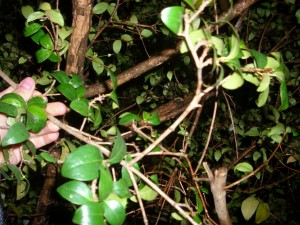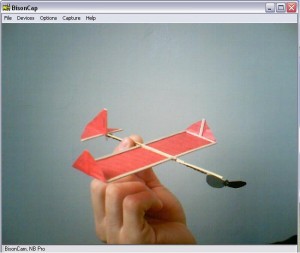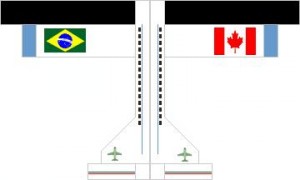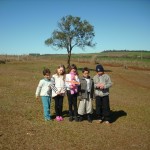Here’s a Squirrel along site a Clound Tramp. I’m assuming this is Brazil since the site is in Portuguese.
Tag Archives: Brazil

Bamboo Squirrels at Engineering School in Brazil

Model Planes Brazil
 My friend Eduardo pointed found this Squirrel sighting on the Internet. The Squirrel model helped Rafael Torquato of Brazil win an aviation championship. edicao. I don’t read Portugese but it looks like they found the Squirrel on the Internet. It seems they refer to it as “Aeromodelo de Vôo Livre (AVL)”. Did I understand that correctly?
My friend Eduardo pointed found this Squirrel sighting on the Internet. The Squirrel model helped Rafael Torquato of Brazil win an aviation championship. edicao. I don’t read Portugese but it looks like they found the Squirrel on the Internet. It seems they refer to it as “Aeromodelo de Vôo Livre (AVL)”. Did I understand that correctly?
Here is the body of the article:
Rafael Pichek
Rafael Torquato da Rocha (Orientador)
Colégio Estadual Professor Júlio Szymanski e Clube De Ciências Augusto Ruschi – CCAR
Araucária – PR“Gostaria de ganhar um prêmio”, exclama Rafael. Porém, esse não é só o pensamento de Rafael, mas da maioria dos jovens expositores. É a segunda vez que ele participa e já foi premiado no ano passado. Rafael trás no seu Diário de Bordo passo a passo do projeto. Equipe JJ
Rafael em seu estande na FEBRACE 2008. Foto: Daniela Rigotto
O aeromodelismo evoluiu muito. Primeiro foram os modelos movidos a elástico, em que os praticantes tinham que jogar os aviões e sair correndo atrás deles. Muito tempo depois, vieram os aviões já motorizados que eram controlados por cabo. O avião possuía um motor que não tinha como acelerar, ficava todo acelerado até o combustível acabar e eram necessários dois praticantes: um que ficava no centro de um círculo segurando a ponta do cabo e um outro que soltava o avião. Logo depois, surgiu o rádio controle e, no mundo, foi destinado uma freqüência exclusiva para os aeromodelos: 72 MHZ. Atualmente o mundo vive a febre do aeromodelismo elétrico que, por não fazer uso de combustível, é mais prático e capaz de executar as mesmas manobras dos aviões com motores a combustão.
O projeto visa conhecer o aeromodelismo, sua história, tipos de aeromodelos, categorias, classes e toda a ciência abarcada neles. Também demonstra que podemos aproveitar a energia gerada pelo elástico para impulsionar um aeromodelo de vôo livre, além de termos um experimento que nos possibilita estudar outros conceitos de Física.
Após pesquisar em revistas e internet, o material obtido foi avaliado e o modelo escolhido foi o squirrel, que é um Aeromodelo de Vôo Livre (AVL). A estrutura do aeromodelo (asa, corpo, leme) foi feita de madeira balsa.
Foi usado papel de seda para cobrir a asa e o leme. A hélice foi feita de folha de alumínio com 150 mm. Um elástico, que serve para propulsão, foi preso na cauda do aeromodelo e conectado ao eixo da hélice. Quando enrolamos o elástico, guardamos energia potencial elástica sendo que, quando esta é liberada é convertida em energia cinética e, posteriormente, é convertida em energia mecânica, girando a hélice e impulsionando o aeromodelo para frente.Com o aeromodelo pronto e voando, analisei diversos conceitos de Física que estão presentes no experimento, o que faz do aeromodelo construído um instrumento eficiente para a demonstração da Física na prática.
Best Model Plane from Brazil
 I would like to introduce my new friend Eduardo who lives in Brazil. He discovered the Squirrel through the internet and has taken interest in making one.
I would like to introduce my new friend Eduardo who lives in Brazil. He discovered the Squirrel through the internet and has taken interest in making one.
He downloaded the free instructions and went through the video instructions but the materials required were not available locally.


He’s quite resourceful and started to experiment with what he had.
Pictured at the left are some fruit trees which are in his neighborhood.
He used twigs from this tree in order to perform a few experiments.
Here are a few shots of his first experiments using the twigs, tissue paper and a propeller from a toy.
As you can see in the videos it is already looking promising. He also experimented with some foam and other materials. Based on the videos I sent him some suggestions. I figured that the wing needed to be moved back to get the balance right. You will notice that the plane noses up and drops at the end of the test. Also, there the propeller causes drag so needs to be wound up a bit for test flying.
He made a “Mini Squirrel” that was even smaller (pictured below).
I didn’t get any video of the Mini Squirrel but he sent me more of his experiments which included printed paper gliders and a commercial snap together toy.





I believe he used the material in from the snap together toy to make a Squirrel.After a lot of experimentation Eduardo found better materials and got his first great flights. I was pretty thrilled to recieve the email after he got some good flights!
“Thank you! You do not know how happy I was when I made it fly. All the neighbors out to see the Squirrel.”
Eduardo has figured it out and has a Squirrel that is flying well as you can see from the pictures and video collage below.
Brazil is an amazing place that I’d love to visit someday.



Squirrels makes front cover of a magazine!
Squirrel made front cover of Mecatronica magazine in Brazil.

























